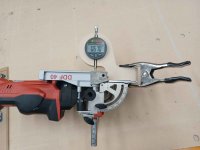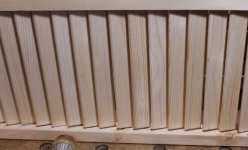Crazyraceguy
Member
- Joined
- Oct 16, 2015
- Messages
- 5,503
I work with a ton of sheet goods, and still don't have a Domiplate. I don't see the attraction/need?
It would bother me to use it upside-down in the first place, plus it wouldn't go back in the Systainer w/o removing it. I'm just not going to do that.
I use the trim-stop quite regularly, but very rarely for the "foot".
It would bother me to use it upside-down in the first place, plus it wouldn't go back in the Systainer w/o removing it. I'm just not going to do that.
I use the trim-stop quite regularly, but very rarely for the "foot".


